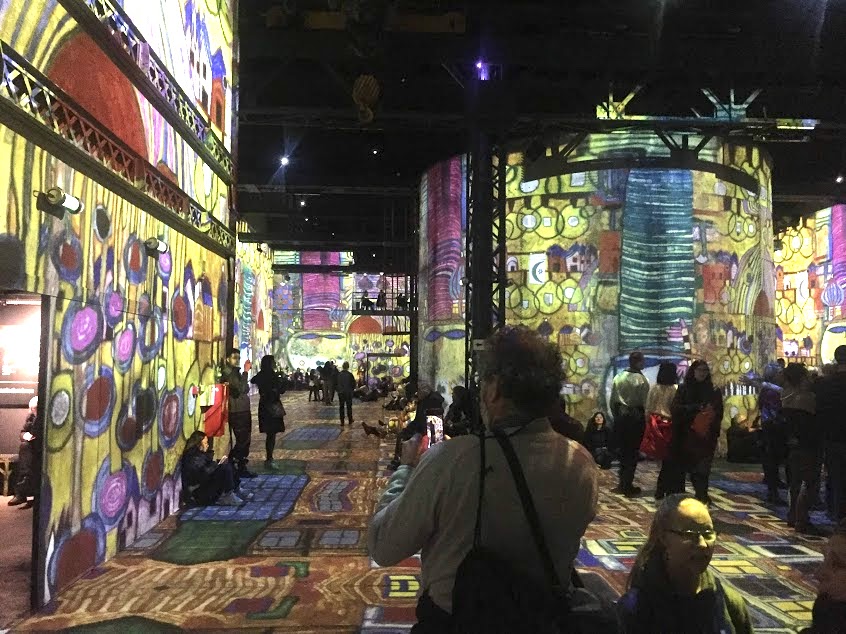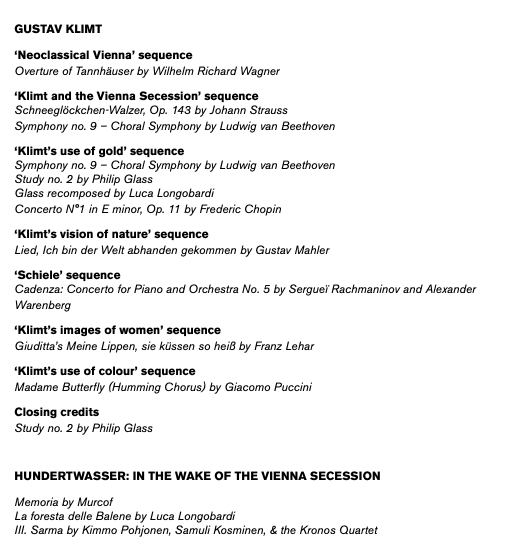Instead of relaxing into the New Year and creating the annual column about the favorite things of the last 12 months, we went to Paris.
Yes, we saw a lot of art in a week. Every walk is a gallery stroll, even if you never go inside.
But we did go inside: Fondation Louis Vuitton for BASQUIAT and the Gehry building, JR at Maison Européenne de la Photographie, a concert at Saint-Séverin Church. We went to see the glorious artist/designer created holiday windows at the department stores— oh those dancing trees at Bon Marché and the trains at Hermes.
It was all glorious. But then we had this experience.
We got ourselves to the 11th Arrondissement and the brand new Culturespaces digital art museum, ATELIER DES LUMIÈRES.

I don’t remember when this place and its inaugural show first crossed my screen, only that I kept reading about it and when the ticket demand resulted in an extension of the show into our trip dates, recommended it to my Mother and cousins who were going along on the trip. It was my treat for them and probably they didn’t pay much attention to what it would be like. They are all classical music lovers and some are professionals, performing, marketing, board members. They all said they liked it and I am sure some of them really did.
They likely didn’t expect this: A digital installation with 140 projectors and 50 speakers creating a “spatialised sound system” covering every inch of nearly 36,000 square feet of historic 19th century factory space with 33 foot walls, water-filled swimming pool below grade, and a mirrored room.
This first show featured Gustav Klimt and Egon Schiele, along with Friedensreich Hundertwasser — all Viennese creators.
We entered the huge space and some found seats on the limited spaces and others sat on stairs or leaned against walls.

When the art started, it came with a gorgeous soundtrack and the only possible reaction was an open mouthed Ohhhhhhhhhhhhh.
Children and adults danced, and most of us started to wander around to see how the projection changed and sound differed across the enormous space.

Photo Credit: © Culturespaces / E. Spiller
My cousin Mary Cay whispered, ‘Did you see the mirror room?’ and directed me to the small space completely outfitted with mirros? When I entered, there were only two others inside trying to capture the experience with their phone cameras—not possible, IMO. Later I brought my Mother into the room and it was empty of people and so dark that it looked like we were walking onto water or into a deep hole because even the floor was a mirror. Wake up!
The projection on all surfaces of the factory made it possible to feel as if we were inside the art. The music—though—is everything. It’s the heart of the installation.
I wanted to buy the CD (the exit is through the gift shop) but it was sold out. Here’s the rundown of the soundtrack with the musical collaboration of Luca Longobardi.

Culturespaces created this kind of immersive art and music experience and has been working with it since 2012.

In an interview the artistic director, Gianfranco Iannuzzi, explains the approach and hopes for the new space:
We want to display and, above all, highlight the works of painters. We hope…to be able to create an orchestration that has a strong emotional impact via the visual animation and the musical soundtrack in an original composition. We want visitors to conserve their own perceptions and interpretation in an area where their movements and itinerary are an integral part of the exhibition. Immersing the general public in a three-dimensional work increases the emotional impact, and helps the viewers to adopt a more participative approach.

And about the soundtrack, Iannuzzi says:
Once again, we worked with Luca Longobardi to create a soundtrack that could evoke and be coherent with the spirit of the images and the era. To illustrate the work of Klimt and Schiele, we decided to focus on the classical works of Wagner, Beethoven, Strauss, and Mahler, while the contemporary compositions of the Kronos Quartet and Longobardi evoke Hundertwasser’s world. The music heightens our visual appreciation, and helps the viewers to observe the works in greater detail; the music is syntonic with or in counterpoint to the images.

The tickets were already gone through the end of the show or I’d have gone back for sure. I want to return to see the next show, Van Gogh is next.
Will this be a way new audiences come to a museum, a classical music concert? I don’t know. But I left thinking, maybe, really truly, maybe.
Because it works, it works so so well.

Cover Art:© Culturespaces / E. Spiller

That must have been an amazing experience. Thanks for sharing it.
It was! Going back soon. Cincinnati should have this too – maybe in one of the windowless floors at Terrace Plaza.
Truly a breathtaking experience. The memory stands out as a highlight of our Paris trip. (The 3-hour night bike ride is another!) Thank you for writing about this so descriptively to capture some of the magic in words. Beautiful photos, too!
Thank you! And also thanks for sharing your terrific photos!
Looks amazing! Thanks for sharing